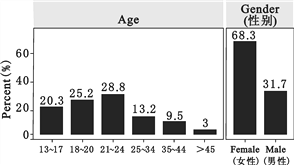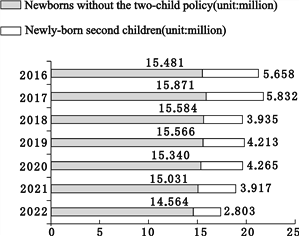-
请阅读下面图文,简要回答所给问题,并将答案写在答题卡相应的位置上。
Though they have been around since the late 1990's, emoji(表情符号) usage has increased sharply with the popularity of smartphones.


Recently, a team from the University of Michigan and Peking University studied 427 million messages sent by users in 212 countries to see the differences in emoji usage by culture. Below are emoji use in text messages.
Though these findings were interesting, the most interesting was the conclusion(结论) that the emoji choice is influenced by societal environment. The researchers say that people living in countries like Australia and France who believe that one person's need is greater than that of a society or group—use happier emojis. But those from countries like Colombia often use sad or angry emojis.
Also, cultures like Turkey and Russia, known for their strictness, appeared to be more satisfied, at least according to the emojis. On the other hand, people in other cultures, like Mexico, seemed unhappy or dissatisfied.
The researchers believe that the findings of “emoji usage” will help make our emoji vocabulary larger. Who knew that the image we add to brighten up our texts could show so much about our culture?
1.In which country are the emojis used most?
________________________________________________________________________
2.What probably influences the emoji choice according to the passage?
________________________________________________________________________
3.What percent of people from aged 13~17 use emojis in text messages?
________________________________________________________________________
4.Do you like happy emojis or unhappy emojis? Why?
________________________________________________________________________
5.How do you like the emojis?
________________________________________________________________________
-
请阅读下面图文,简要回答所给问题,并将答案写在答题卡相应的位置上。
195 countries reached an agreement(协议) on Dec. 12, 2015 after two weeks’ talks in Paris. They talked about climate(气候) change. It is the first time in history that most of the world’s countries, rich or poor, promised to take action to deal with climate problems.
Below is a chart showing where the greenhouse gas(温室气体) comes from.
Where is greenhouse gas from?

The Paris Agreement(巴黎协定) sets up a goal of cutting down the earth temperature to less than 2℃. If the warming gets above 2℃, there will be serious problems on the earth like natural disasters.
The agreement also asks countries to volunteer to do things. For developed countries, they will do even more. They have a plan to offer over 100 billion dollars to help poorer countries to develop clean energy like water and wind power.
However, the Paris Agreement won’t solve earth warming by itself. The future also depends on how well each country will carry out their promises.
1.What percent of greenhouse gas do buildings produce?
________________________________________________________________________
2.Where does the most of greenhouse gas come from?
________________________________________________________________________
3.Why was the meeting in Paris an important one in history?
________________________________________________________________________
4.Will the Paris Agreement solve the earth warming by itself? And why?
________________________________________________________________________
5.As a student, what should you do to help to make greenhouse gas less?
________________________________________________________________________
-
请阅读下面图文,简要回答所给问题,并将答案写在答题卡相应的位置上。
2nd Child:An Extra Pair of Chopsticks?
(System category:News)
It's almost a year since China introduced the universal twochild policy.Statistics show the number of newborns in the first half of 2016 rose by 6.9 percent yearonyear,with newlyborn second children accounting for more than 40 percent of the total.Is Chinese society wellprepared for the policy? The answer may be not completely positive.
Steady Population Growth
According to the Chinese Academy of Social Science,and estimated(预测的) 5.658 million babies will be born in 2016,and the chart below is a prediction for the following years.


Are Schools Wellprepared?
With China's universal twochild policy,the increasing number of newborns in the county has led to a greater demand for kindergarten places.How to enable every child to attend school and receive a good schooling has therefore become an issue of urgency.

1.What percentage of newlyborn babies are second children in the first half of 2016?
________________________________________________________________________
2.When will the baby boom arrive?
________________________________________________________________________
3.Were kindergartens enough for newborns in 2015?
________________________________________________________________________
4.Why will many schools be short of teachers?
________________________________________________________________________
5.Do you think it's a good idea to have a second child in your family? Why do you think of it?
________________________________________________________________________
-
请先阅读下面短文,掌握其大意,然后从方框内所给的词中选出最恰当的10个,用其适当形式填空,并将答案填写到答题卷的相应位置。每个词限用一次 。(每小题1分)
| have been who really washing surprising complain I see more months casually important |
Years ago , I lived in the house in a large city . The house next door was a few meters away from 1. . Through the window , I could often see a woman 2. I had never met doing some reading in the house every afternoon.
Several 3. went by ,I began to notice that her window was dirty. Everything was not very clear through the dirty window. I wondered why the woman didn’t wash her window. It 4. looked terrible.
One bright morning, I decided to clean my house, including 5. the window inside. Late in the morning, when I finished all the cleaning, I sat down by the window with a cup of coffee for a rest. How 6. ! I found that the woman’s window was actually so clean that she could 7. clearly sitting by the window.
That was quite an 8. lesson for me. How often had I looked at others through my own shortcomings(缺点)!
Since then, I 9. used to asking myself whether I am looking through my own dirty window. Before I want to judge someone, I always think 10. than before and try to clean the dirty window so that I may see the world around me more clearly ..
-
任务型阅读
阅读下面的短文,然后根据文章内容简要回答91至95小题,并将答案写在答题卡上相应的位置。
Stephen Hawking was born in England in 1942.He's one of the most famous scientists on space and time in the world. He is called the King of the Universe.
He studied math and science at Oxford University,then he became seriously ill,which made him unable to speak or breathe without the help of machines.
He went on to study at Cambridge University after graduating from Oxford University.In 1965,he got a Doctor's Degree of philosophy(哲学).Because of his serious illness,it was difficult for him to draw diagrams or to write.So he started to think in pictures.With this new way of thinking,he is respected by people in the world.Then in 1988,he wrote his first important book,A Brief History of Time.It was sold more than 5.5 million copies in over 33 different languages.He was once invited to China to give lectures(做演讲).His self-confidence and humorous conversations impressed us deeply.
1.Was Hawking born in England? (no more than 3 words)
_________________________________________________
2.What did Hawking study at Oxford University? (no more than 3 words)
_________________________________________________
3.When did Hawking get his Doctor's Degree of philosophy? (no more than 2 words)
_________________________________________________
4.What's the name of Hawking's first important book? (no more than 5 word)
_________________________________________________
5.Where was Hawking once invited to give lectures? (1 word)
_________________________________________________
-
阅读下面的短文,然后根据文章内容简要回答91至95小题,并将答案写在答题卡上相应的位置。
Many Chinese people like hot pot and Li Yang is one of them.
Three days ago, Li Yang arrived in England. There he had three days of hamburgers, sandwiches, and potatoes. Yesterday he was very excited when he heard that there was going to be a meal of hot pot to welcome the new students.
He went into the room and sat next to an American girl. To his surprise, he saw potatoes and bread in front of him. Where was the hot pot?
When she saw Li Yang was very surprised, the American girl told him that hotpot is NOT hot pot. China has hot pot in two words but English hotpot is written in one word.
Hotpot is made from meat, potatoes and onions. People put it in the oven (烤箱) all day in a heavy pot and on a low heat. It is easy to cook.
Hotpot tastes nice. But Li Yang still misses hot pot, two words!
1.Do many Chinese people like hot pot? (no more than 3 words)
2.When did Li Yang arrive in England? (no more than 3 words)
3.Who told Li Yang that hotpot is not hot pot? (no more than 3 words)
4.Which country has hot pot in two words? (no more than 1 word)
5.What is English hotpot made from? (no more than 4 words)
-
根据短文内容按要求完成任务,并将答案写在答题卡的相应位置上。
根据短文内容简要回答下面的问题。
Dick was a college student. He was studying history. But at the end of the first year he did not pass the exam. A month later he sat for the make-up(补考) exam, but he was do wn again. Dick was worried, because he knew he might have to leave the college.
wn again. Dick was worried, because he knew he might have to leave the college.
When Dick’s father knew this, he went to see the professor. “Dick is a good boy,” said the father. “If you let him pass this time, I’m sure he will study harder next year and pass all exams with very good marks.”
“No, that’s quite impossible,” answered the professor. “He almost knows nothing about history. Last month I asked him when Napoleon(拿破仑) died, and he said he didn’t know.”
“Please, sir, give him another chance,” said the father. “Sometimes we were too busy to read the evening papers carefully, so we even didn’t know Mr Napoleon was ill.”
根据上面短文的内容回答问题:
1.What was Dick?
2. Was he good at his lessons?
3. Did Dick pass the make--up exam ?
4.What did his father think of Dick?
5. Did his father know who Napoleon was?
-
回答问题(共5小题;每小题2分,满分10分)
请阅读下面这篇文章,根据文章内容用完整句子回答下列问题,并将答案填写在答题卡的相应位置上。
Welcome to my blog
Stephen Williams Friday, June 21
Today I went to the beach. It was my first day at the ocean for many years. The sound and smell of the ocean brought back memories of the great family vacations when I was a child. We always went to the beach for a week in the summer. I remembered playing for hours in the sand with my sister and crying when I couldn’t have any ice cream. Oh, and I remembered finding a huge jellyfish on the beach, and running away because I was scared! Amazing, really, the things you remember from your childhood…
Comments
Yeah, I remember going for long walks in the countryside. I guess I was only eight or nine. In the winter, my mom made soup, and I can still remember the wonderful smell! When we got home, I always went straight to sleep…
Carla, Mexico
What a great story! I remember going to the beach, too – on Christmas Day! My family lived in Australia when I was young. I remember waking up early. After we opened our presents, we always went to the beach and had a barbecue.
Leung, Hong Kong
The best memory I have is playing my first video game, Super Mario. I remember thinking that it was amazing, It was my tenth birthday and I still remember opening the box.
Daisuke, Japan


1.Was it the first time for Stephen to go to the beach on June 21?
2.Why did Stephen cry during his family vacations?
3.What wonderful smell can Carla still remember?
4.Where did Leung live when she was young?
5.When did Daisuke play his first video game?
-
回答问题(共5小题;每小题2分,满分10分)
请阅读下面这篇文章,根据文章内容用完整句子回答下列问题,并将答案填写在答题卡的相应位置上。
Welcome to my blog
Stephen Williams Friday, June 21
Today I went to the beach. It was my first day at the ocean for many years. The sound and smell of the ocean brought back memories of the great family vacations when I was a child. We always went to the beach for a week in the summer. I remembered playing for hours in the sand with my sister and crying when I couldn’t have any ice cream. Oh, and I remembered finding a huge jellyfish on the beach, and running away because I was scared! Amazing, really, the things you remember from your childhood…
Comments
Yeah, I remember going for long walks in the countryside. I guess I was only eight or nine. In the winter, my mom made soup, and I can still remember the wonderful smell! When we got home, I always went straight to sleep…
Carla, Mexico
What a great story! I remember going to the beach, too – on Christmas Day! My family lived in Australia when I was young. I remember waking up early. After we opened our presents, we always went to the beach and had a barbecue.
Leung, Hong Kong
The best memory I have is playing my first video game, Super Mario. I remember thinking that it was amazing, It was my tenth birthday and I still remember opening the box.
Daisuke, Japan


1.Was it the first time for Stephen to go to the beach on June 21?
2.Why did Stephen cry during his family vacations?
3.What wonderful smell can Carla still remember?
4.Where did Leung live when she was young?
5.When did Daisuke play his first video game?
-
请阅读下面图文内容, 按要求完成所给任务, 并将答案写在答题卷相应的位置上。
Paper or plastic?
After paper, plastic seems to be the most popular material for making banknotes. Compared with paper money, plastic banknotes are stronger and last for a longer time, so people can keep using them. But they are much more expensive to make.
The fifth edition of the Renminbi (RMB) came out on Aug. 30, 2019. These bills will have brighter colors and new security features, which will make printing fake(假的)money even harder. We've been using banknotes for around 1, 000 years. Back in the Northern Song Dynasty, Chinese people made the world's earliest paper money to replace metal coins(金属硬币). These banknotes were called jiaozi.
Obviously, paper money is cheaper to make and easier to carry. These advantages made it more popular than other forms of money. But now, in the digital(数码的)age, paper money seems to be disappearing for the same reason-what's more convenient than not having to carry any money at all?
My life in Beijing is quite different from that in India. 在中国, 我出去的时候很少带钱。I can pay for almost everything by Alipay. It's amazing. However, if you don't take wallet with you, you'll get into trouble.
-Sam from India
China seems to be heading toward becoming a cashless society. From supermarkets to street stalls(小摊), people pay by using the WeChat Wallet and Alipay apps on their mobile phones. Sweden is even closer to a future without paper money. Many Swedish banks no longer even have cash on hand.
But there are worries about creating cashless societies. Some say, "It's unfair to the poor and people without too much education.”It's not easy for them to open bank accounts(账户)or deal with mobile phones. And if all of your money is digital, you may lose your money if your accounts are hacked(黑客攻击).
Although paper money is in a losing war with electronic payment in some countries, it's still a big thing in most parts of the world. It may take a little longer than you think to see it go away.
1.When did Chinese people make the world's earliest paper money?
2.Why is plastic the most popular material for making banknotes? (one reason is OK)
3.What's the advantage of paper money?
4.Please translate the underlined sentence into English.
5.Please translate the underlined sentence into Chinese.
6.Do you think paper money is going away? Why or Why not?









